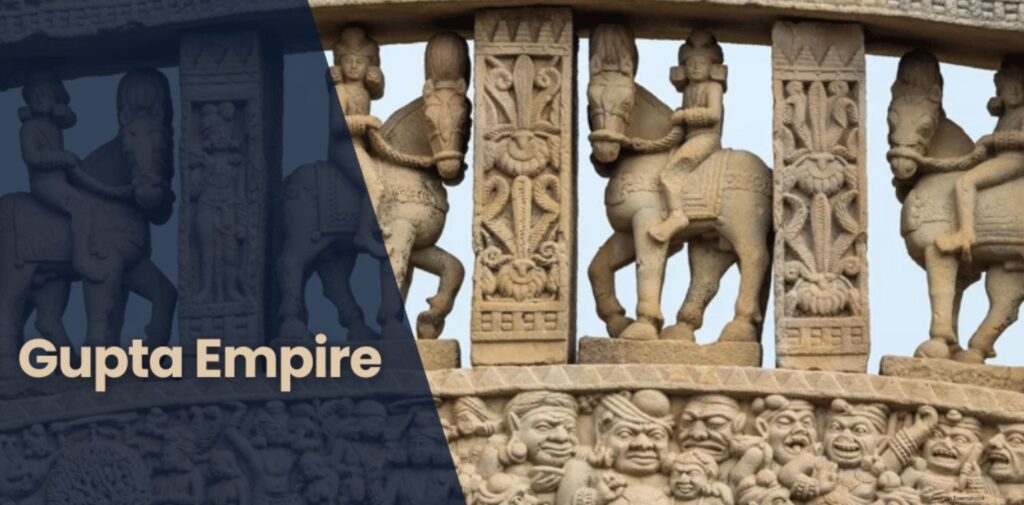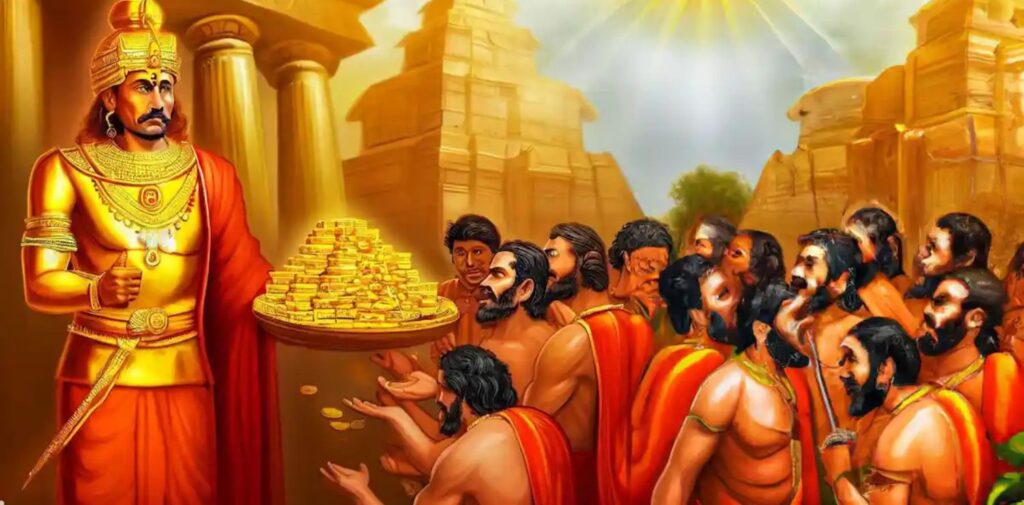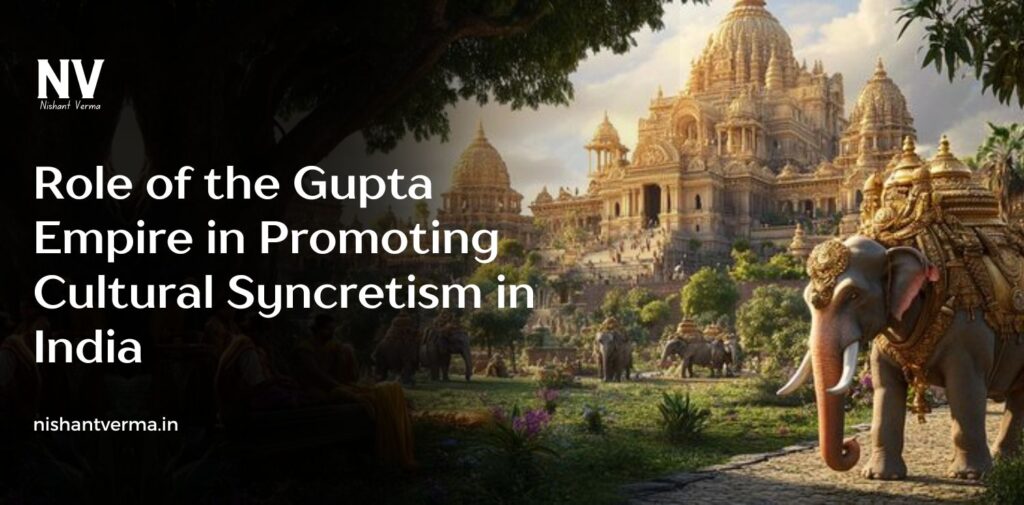The Gupta Empire, which ruled over a large part of India from around 320 CE to 550 CE, is often regarded as one of the golden ages of Indian history. This period marked significant advancements in science, literature, art, and philosophy, but perhaps one of its most lasting impacts was in promoting cultural syncretism. Syncretism refers to the blending or merging of different cultural, religious, and social practices. The Gupta Empire played a crucial role in bringing together diverse cultural elements and creating a harmonious society. In this article, we will explore the Role of the Gupta Empire in Promoting Cultural Syncretism in India.
Understanding Cultural Syncretism
Before diving into the specifics of the Gupta Empire, it’s essential to understand what cultural syncretism is. It refers to the fusion of different cultures and traditions to create something new while maintaining elements from each. This blending can happen in various ways, including through art, religion, language, and social customs. In ancient India, as different kingdoms and empires interacted with each other, cultural exchanges often led to the mixing of beliefs, practices, and artistic styles. The Gupta period was one of the most influential times when these exchanges were actively promoted, resulting in a flourishing of Indian civilization.

The Rise of the Gupta Empire
The Gupta Empire was founded by Chandragupta I in 320 CE. Under his successors, particularly Samudragupta and Chandragupta II, the empire expanded to cover much of northern India, parts of central India, and some areas in the Deccan. The Guptas established a centralized administration, which enabled them to maintain stability and order across a large territory. The empire’s prosperity was built on agriculture, trade, and the support of cultural and intellectual growth.
The Gupta rulers were known for their promotion of culture, art, and education. They patronized scholars, artists, and philosophers, fostering an environment where creativity and intellectual exchange could thrive. This atmosphere provided the perfect setting for the fusion of various cultural elements, leading to the development of a uniquely Indian cultural identity.
Religious Tolerance and the Rise of Hinduism
One of the most significant aspects of cultural syncretism during the Gupta Empire was its religious tolerance. While Hinduism was the dominant religion during this time, the Gupta rulers did not impose it upon their subjects. Instead, they allowed other religions to coexist peacefully, leading to a blending of beliefs.
Under the Gupta Empire, Hinduism experienced a revival, and many of the religious practices and rituals that define modern Hinduism today were solidified during this time. However, the Gupta rulers were also tolerant of other religious traditions, including Buddhism and Jainism. Many Gupta emperors, such as Chandragupta I and Samudragupta, supported the growth of Buddhist and Jain communities, contributing to the blending of ideas and religious practices across these traditions.
The tolerance shown by the Gupta rulers allowed for the exchange of philosophical and religious ideas. This period saw the merging of different religious philosophies, rituals, and deities, enriching the religious landscape of India.

The Development of Art and Architecture
The Gupta Empire is often considered the golden age of Indian art and architecture. During this period, there was a significant growth in the development of both Hindu and Buddhist art. Gupta art is known for its refinement and elegance, which combined influences from earlier Indian traditions with new ideas brought about by cultural exchanges.
In sculpture, the Gupta period saw the creation of beautiful statues of Hindu deities, such as Vishnu and Shiva, as well as Buddha statues that reflected the simplicity and serenity of Buddhist teachings. The style of these sculptures showed a harmonious blend of indigenous Indian artistic traditions and new influences from outside India, particularly from Greece and Persia.
The Gupta rulers also constructed magnificent temples, which blended both traditional Indian architectural styles and new techniques. The temples built during this period were often richly decorated with intricate carvings and sculptures depicting scenes from Hindu mythology, while Buddhist monasteries also saw significant architectural development. This architectural syncretism led to the creation of unique temple complexes that were both beautiful and functional.
The Influence of Sanskrit Literature
Another key feature of cultural syncretism during the Gupta period was the growth of Sanskrit literature. The Gupta rulers were great patrons of literature and learning, and this led to the flourishing of Sanskrit as the language of culture and administration. This period saw the creation of some of the most important works in Indian literature, including the plays of Kalidasa, the Puranas, and the writings of other scholars like Varahamihira and Aryabhata.
The influence of Sanskrit literature spread across India and beyond, and it played a significant role in uniting the diverse cultures of the empire. Sanskrit was used as a unifying force that brought together different regional languages, customs, and beliefs. It became the medium through which people from various parts of the empire could communicate and exchange ideas.
Kalidasa’s works, for example, blended elements of Hindu mythology with everyday human experiences, making them accessible to a wide audience. His play Shakuntala is a beautiful example of the way Gupta-era literature combined religious themes with cultural expressions, creating a fusion of tradition and creativity that continues to be celebrated today.
The Role of Trade in Cultural Exchange
The Gupta Empire was strategically located along important trade routes, both within India and with neighboring regions. This facilitated the exchange of goods, ideas, and culture, further promoting syncretism. The Guptas established a stable and prosperous economy based on agriculture, trade, and crafts, which led to the flourishing of urban centers.
Trade with regions such as Southeast Asia, China, the Middle East, and even the Roman Empire brought new ideas and cultural influences into India. These influences were absorbed into Indian society and culture, leading to the development of a more cosmopolitan and diverse civilization. Merchants, travelers, and scholars from different parts of the world brought with them new ideas, philosophies, and technologies, contributing to the blending of different cultural practices.
The Gupta Empire also supported the development of the arts and crafts, which were highly valued in trade. Indian textiles, jewelry, and sculptures were in high demand across Asia and beyond, and these goods carried with them cultural messages that promoted India’s unique identity while also absorbing external influences.

The Gupta Legacy of Cultural Syncretism
The Gupta Empire’s role in promoting cultural syncretism has left a lasting legacy on Indian civilization. The blending of religious practices, artistic styles, literary traditions, and philosophical ideas laid the foundation for the development of a unified Indian culture that would continue to evolve over the centuries.
The Gupta period also saw the development of a distinctive form of Indian identity that embraced diversity. Hinduism, Buddhism, and Jainism all coexisted and influenced each other, creating a dynamic and pluralistic religious culture. This spirit of coexistence and exchange helped shape India’s cultural landscape for generations to come.
Conclusion: Role of the Gupta Empire
The Gupta Empire’s promotion of cultural syncretism was one of the defining features of this golden age of Indian history. By fostering an environment of religious tolerance, intellectual exchange, and artistic creativity, the Gupta rulers helped bring together diverse cultural elements into a cohesive and vibrant society. This blending of ideas, beliefs, and practices not only shaped the cultural heritage of India but also contributed to the development of a rich and harmonious civilization that continues to influence the world today. The Gupta Empire’s legacy serves as a reminder of the power of cultural exchange and the importance of embracing diversity in creating a unified society.




